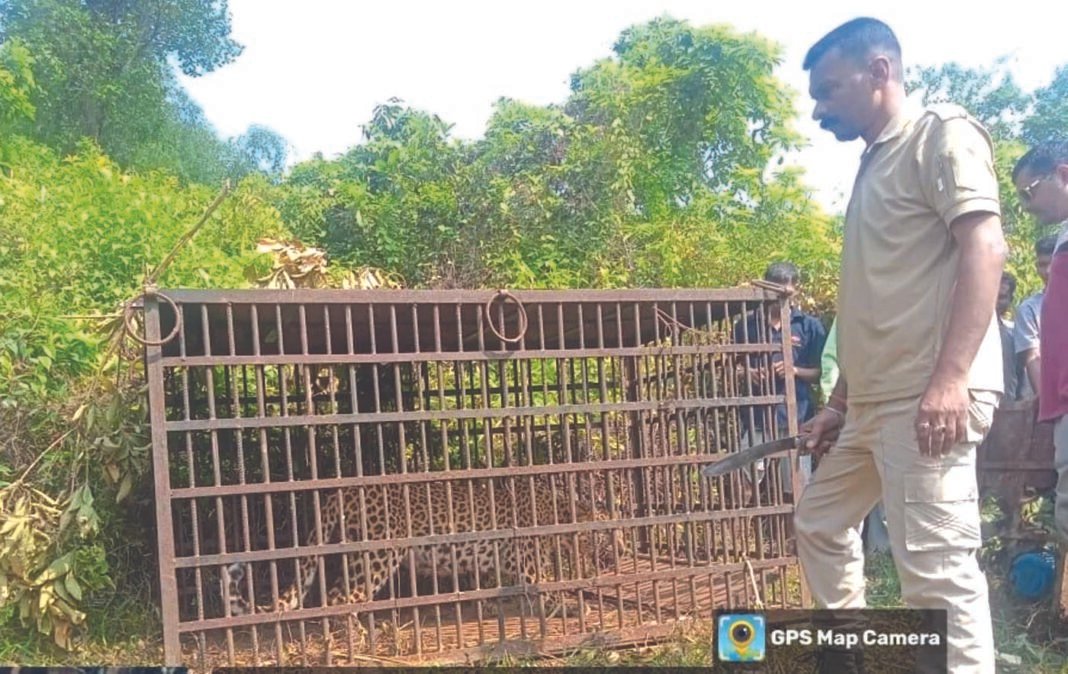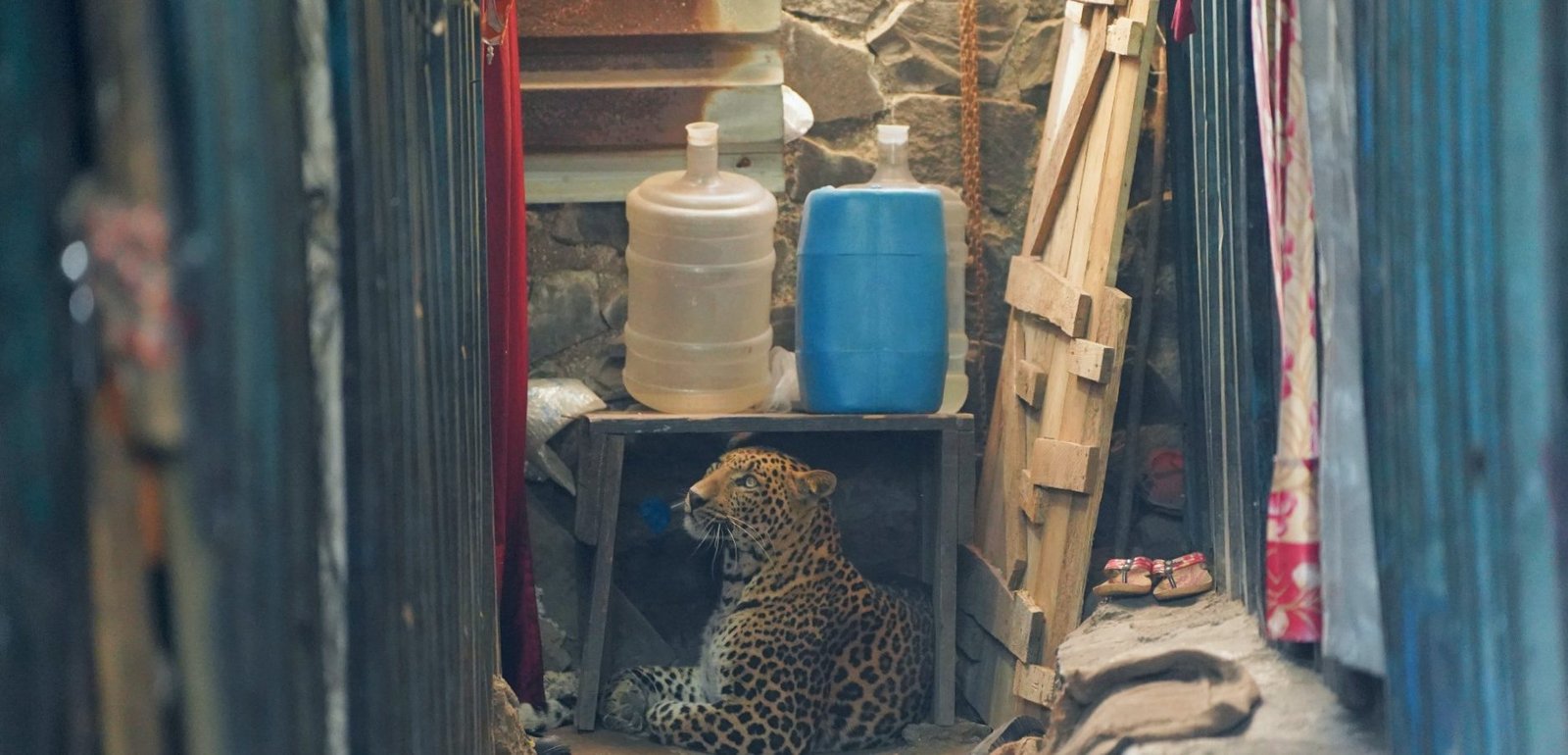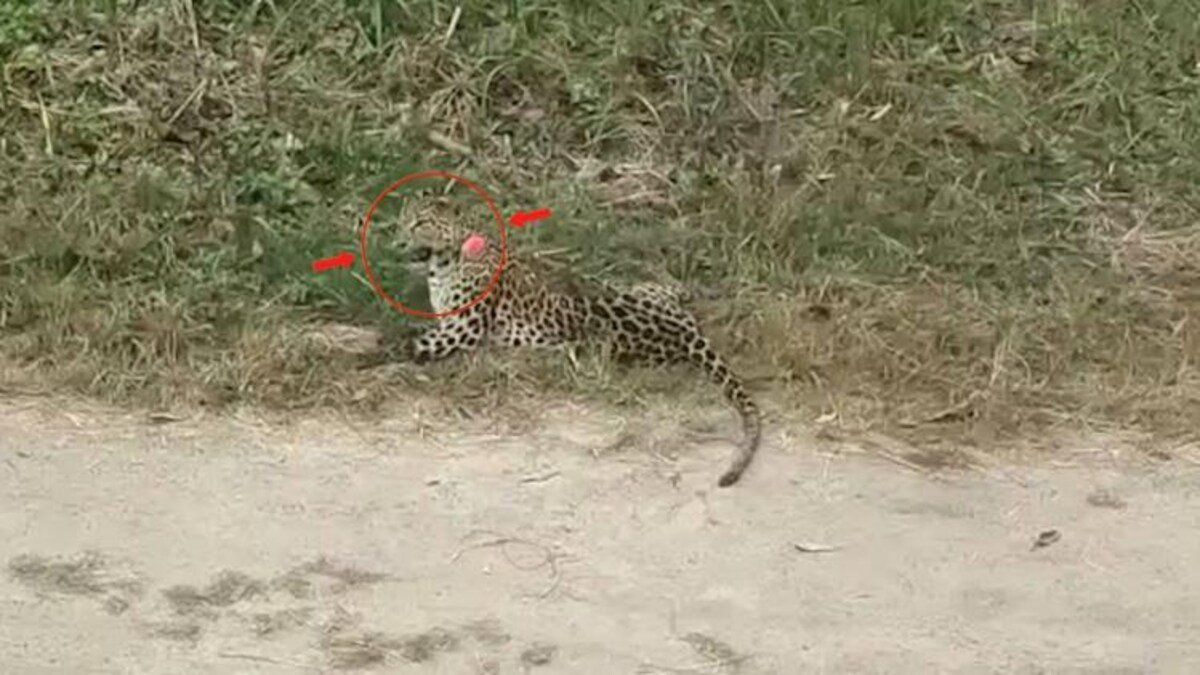HT Correspondent
JORHAT, July 20: A female leopard that had been terrorising workers at the Bhelaguri Tea Estate, located under the Mariani Range of the Jorhat Forest Division, was successfully trapped in a cage in the intervening night of Saturday and Sunday, putting an end to days of anxiety among tea garden residents.
According to information provided by sources in the area, frequent sightings of the big cat had been reported by the labour community of the tea estate over the past several days.
Workers expressed concern not only for their safety but also for their livestock, which had reportedly come under attack by the leopard.
The situation reached a point where the garden authorities, acting on complaints from their workers, approached the Forest Department seeking immediate intervention.
Responding to the request, the Forest personnel placed a cage in the Natun Line area of the estate.
Their efforts paid off when the animal was found trapped inside the cage early on Sunday morning.
The successful capture of the leopard quickly attracted large crowds from the tea garden and nearby villages, with curious residents flocking to the site for a glimpse of the animal.
Later, a Forest Department team arrived at the location, inspected the captured animal, and subsequently transported it away from the garden premises.
Officials have not disclosed the immediate destination of the leopard, but it is expected to be relocated in accordance with standard wildlife management protocols.
It may be noted that leopard intrusions into human-inhabited areas, particularly in village and tea garden regions, are not uncommon in Jorhat district and other parts of Upper Assam.
With forest cover increasingly fragmented and wild prey becoming scarce, these animals often stray into populated zones, resulting in conflict with humans.
While many such encounters end with the loss of livestock, some have also led to injuries or fatalities—on both sides.
In certain cases, agitated residents have retaliated, leading to the death of the animal. In recent years, the Forest Department has resorted to caging operations as a preventive and non-lethal response to such wildlife conflict situations.












